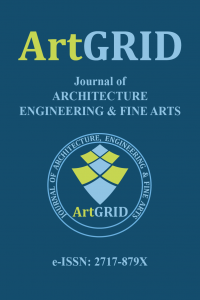YAZICI STEGANOGRAFİSİ, SARI NOKTA ANALİZİ – BİR MİNİ DERLEME
Günümüzde teknolojinin hızlı gelişmesi ile renkli lazer yazıcı, tarayıcı ve görüntüleme cihazları günlük kullanımımızda çokça rastlanılan cihazlar haline gelmiştir. Dağıtık sistem mimarileri ve mantığı giderek yaygınlaşmaktadır. Ortak kullanım alanımızda bulunan yazıcılar, tarayıcılar ve benzeri cihazlar vasıtasıyla aldığımız ürünlerin en temelinde illegal aktivitelerin takip edilmesi amacı ile fiziksel steganografi yöntemi ile işaretleme yapılmaktadır. Bu işaretlemeler toplumun çoğu tarafından bilinmemektedir. Sarı noktalar olarak işlenen bu veri gizleme yöntemi çalışmamızda ele alınmış ve konu ile ilgili bilgiler paylaşılmıştır.
Anahtar Kelimeler:
Sarı Nokta Analizi;, Sahtecilik Koruma Sistemi;, Makina Kimlik Kodu;, Yazıcı Steganografisi;
PRINTER STEGANOGRAPHY, YELLOW DOT ANALYSIS - A MINI SURVEY
Nowadays, with the rapid development of technology, color laser printers, scanner, and imaging devices have become ubiquitous devices in our daily use. Distributed system architectures and logic are becoming increasingly popular. The products that we buy through printers, scanners, and similar devices in our common use area are marked by physical steganography method to follow the illegal activities. These markings are not known by most of society. This data hiding method, which was processed as yellow dots, was discussed in our study, and information about the subject was shared.
Keywords:
Yellow Dot Analysis;, Counterfeit Protection System;, Machine Identification Code;, Printer Steganography;,
___
- Ali, G.N., Mikkilineni, A. K., Chiang, P. J., Allebach, J. P., Chiu, G. T. ve Delp E. J. (2003). Intrinsic and Ectrinsic Signatures for Information Hiding and Secure Printing with Electrophotographic Devices. Conference: NIP19: International Conference on Digital Printing Technologies.
- Beusekom, J., Schreyer, M. ve Breuel T. M. (2010). Automatic counterfeit protection system code classification, Proc. SPIE 7541, Media Forensics and Security II, 75410F (27 January 2010); doi: 10.1117/12.840253; https://doi.org/10.1117/12.840253
- Beusekom J., Shafait F. ve Breuel T. M. (2013). Automatic Authentication of Color Laser Print-Outs Using Machine Identification Codes. Pattern Analysis and Applications, November 2013, Volume 16, Issue 4, pp 663–678.
- Buck, P. (2018). Reverse Engineering the Machine Identification Code. 10.13140/RG.2.2.28980.76169.
- Jiang, W., Ho, A. T. S., Treharne, H. ve Shi. Y. Q. (2010) A novel multi-size block benford’s law scheme for printer identification. PCM'10 Proceedings of the 11th Pacific Rim conference on Advances in multimedia information processing: Part I Pages 643-652 Shanghai, China September 21 - 24, 2010
- Khanna, N., Mikkilineni, A. K., Chiu, G. T. C., Allebach, J. P. ve Delp, E. J. (2008). Survey of Scanner and Printer Forensics at Purdue University. IWCF 2008 LNCS 5158 pp.22-34.
- Mikkilineni, A. K., Chiang, P. J., Ali, G. N., Chiu, G. T. C., Allebach, J. P. ve Delp III, E. J. (2005). Printer identification based on graylevel co-occurrence features for security and forensic applications, Proc. SPIE 5681, Security, Steganography, and Watermarking of Multimedia Contents VII, (21 March 2005)
- Otsu, N. (1979). A threshold selection method from gray-level histograms. IEEE Trans. Sys., Man., Cyber. 9 (1): 62–66. doi:10.1109/TSMC.1979.4310076.
- Sauvola, J. ve Pietikainen, M. (2000). Adaptive document image binarization. Pattern Recognition 33(2), 225–236.
- Schreyer, M. (2009). Intelligent printing technique recognition and photocopy detection for Forensic document examination. In Proc. of Informatiktage 2009, volume S-8, pages 39-42,
- Schulze, C., Schreyer, M., Stahl, A. ve Breuel, T. M. (2008). Evaluation of graylevel-features for printing technique classification in high throughput document management systems. In Proc. of the 2nd Int. Workshop on Computational Forensics, volume 5158 of Lecture Notes in Computer Science, pages 35-46, Washington, DC, USA, August 2008.
- Schulze, C., Schreyer, M., Stahl, A. ve Breuel T. M. (2009). Using DCT features for printing technique and copy detection. In Proc. of the 5thInt. Conf. on Digital Forensics, pages 95-106, Orlando, FL, USA, January 2009
- Sönmez, F., Kaynar, O. ve Takaoğlu F. (2018). İdeal Steganografi Senaryosu: Taşıyıcı Resimlerin Kapasitelerinin Hesaplanması, Frekans Tabanlı Steganografide OPA Yöntemi. [Ideal Steganography Scenario: Calculation of Capacities of Carrier Images, OPA Method in Frequency-Based Steganography] ACTA INFOLOGICA, 2018; 2(1): 12-21.
- Takaoğlu, F. (2016). DWT ve DCT Steganografide Performans Analizi [Performance Analysis in DWT and DCT Steganography](Yüksek Lisans Tezi).
- Yayın Aralığı: Yılda 2 Sayı
- Başlangıç: 2019
- Yayıncı: Hakan OĞUZ
